The Gold Rush era left behind more than just stories of fortune and adventure—it also created countless ghost towns scattered across the American West. These abandoned settlements, once bustling with miners and their families, now stand as haunting reminders of a bygone era. Each ghost town has its own unique story, from rapid rises to sudden declines, shaped by the pursuit of gold, silver, and other precious resources. Today, these offer a fascinating glimpse into history, preserving the remnants of a time when the promise of wealth drove people to the most remote corners of the country. Here are some of the most intriguing ghost towns from the Gold Rush era, each with a captivating tale to tell.
Silver City, Idaho
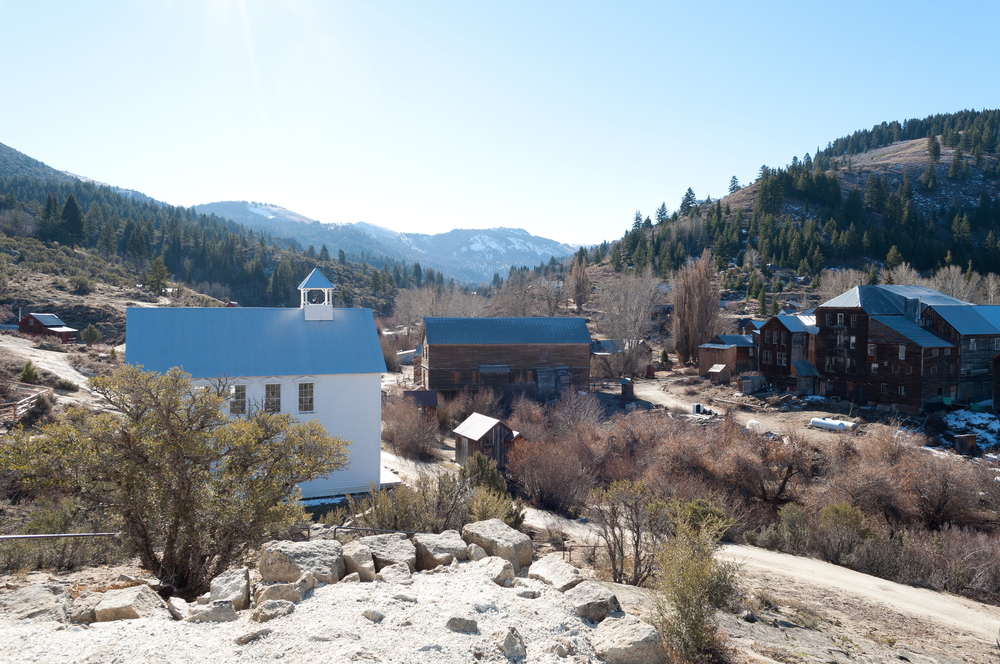
Silver City was founded in 1864 following the discovery of gold and silver in the Owyhee Mountains. During its peak in the late 19th century, the town boasted over 250 businesses, including hotels, saloons, and a newspaper. Remarkably, it was spared the fires and destruction that plagued many other mining towns, leaving much of its original architecture intact. By the early 20th century, as ore production declined, residents began to leave, and Silver City became a ghost town. Today, it remains one of Idaho’s best-preserved historical sites, with over 75 structures still standing, including the iconic Idaho Hotel, which now serves as a seasonal inn for visitors. The remote location of Silver City adds to its charm, offering a peaceful retreat and a vivid snapshot of the Gold Rush era. It is a popular destination for history enthusiasts and adventurers seeking a connection to Idaho’s mining heritage.
Ruby, Arizona
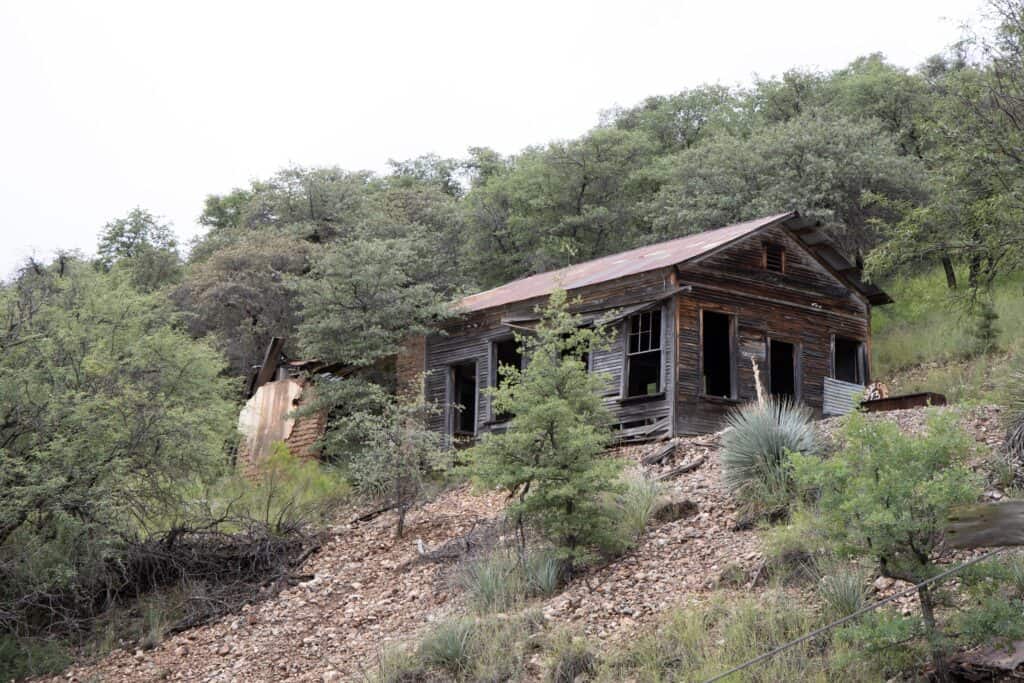
Ruby was established in the 1870s as a gold and silver mining camp in southern Arizona near the Mexican border. The town gained notoriety in the early 1900s for its productive mines, which yielded gold, silver, and lead. At its peak, it had a population of about 1,200 and included a school, mercantile, and several homes. However, a series of violent incidents, including infamous murders known as the Ruby Murders, contributed to its decline, and by the 1940s, the town was abandoned. Today, it is one of Arizona’s best-preserved ghost towns, with many original structures, such as the jail and schoolhouse, still standing. The surrounding desert landscape and the remnants of the mines make Ruby a fascinating and eerie destination. Efforts to preserve the town ensure its history and intrigue remain accessible to visitors.
Terlingua, Texas
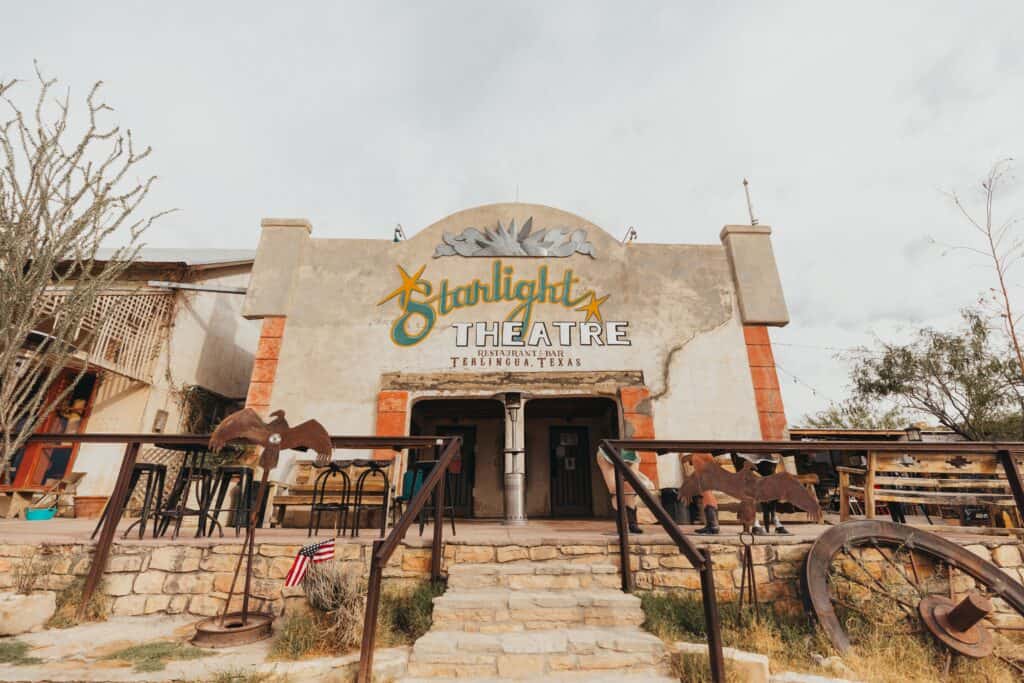
Located near Big Bend National Park, Terlingua was a thriving quicksilver mining town in the late 19th and early 20th centuries. The discovery of cinnabar, the ore from which mercury is extracted, brought miners and their families to this rugged desert location. By the 1930s, it was booming, but as the mercury market declined, so did Terlingua’s fortunes, leading to its eventual abandonment. In the 1970s, artists and adventurers rediscovered the town, breathing new life into its adobe ruins. Today, it is a quirky mix of ghost town and living community, with restaurants, art galleries, and the famous Terlingua Chili Cook-off drawing visitors annually. Its haunting beauty and rich history make it a must-see destination for travelers exploring West Texas.
Belmont, Nevada
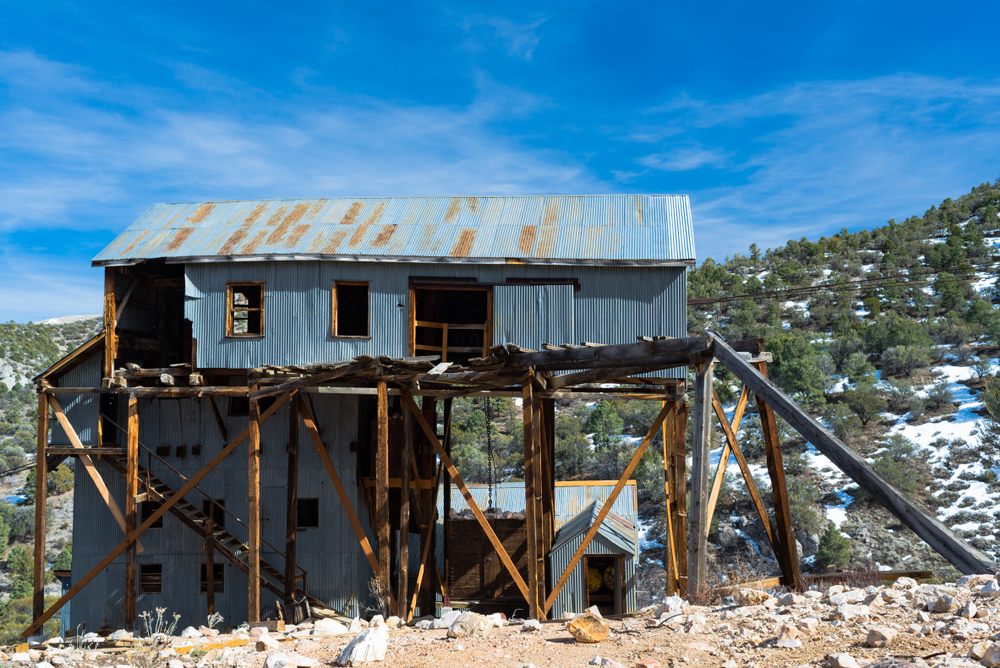
Belmont was founded in 1865 after the discovery of silver ore in central Nevada, quickly becoming one of the state’s most promising mining towns. By the late 1860s, it was home to around 2,000 residents, complete with a courthouse, saloons, and a thriving business district. However, as the mines were depleted in the 1870s, its population dwindled, and many buildings were left to decay. The well-preserved Belmont Courthouse remains a central feature of the ghost town and is a testament to its prosperous past. Today, visitors can explore the ruins and enjoy the town’s scenic location in the Nevada desert. It is a quiet, off-the-beaten-path destination that appeals to history buffs and those seeking solitude. Efforts to restore parts of the courthouse highlight the community’s commitment to preserving this piece of Nevada’s mining heritage.
Bodie, California
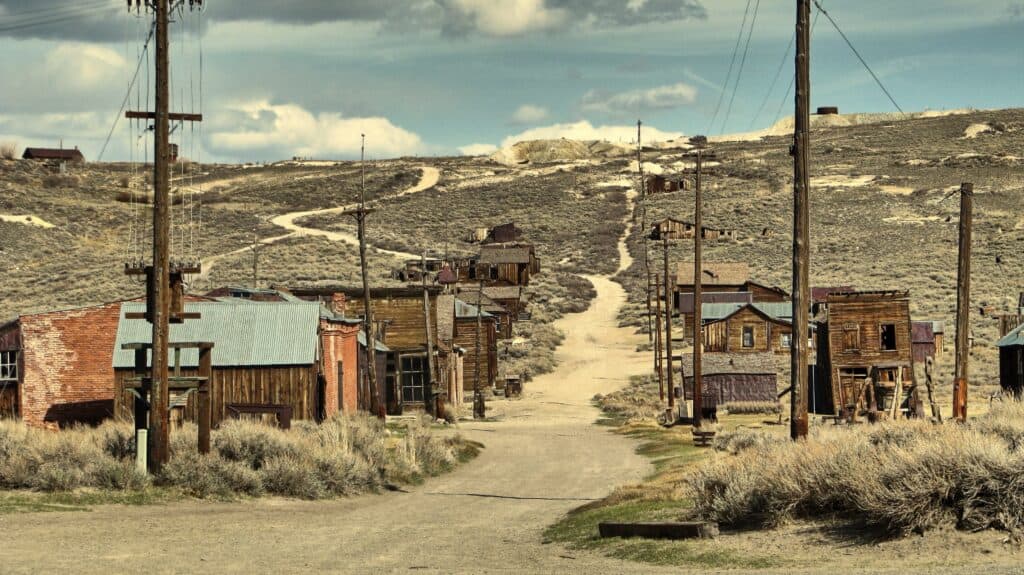
Nestled in the Sierra Nevada mountains, Bodie was established in 1859 following the discovery of gold by prospector W.S. Bodey. The town experienced a significant boom in the late 1870s, with its population swelling to between 5,000 and 7,000 residents, making it California’s third-largest city at the time. Bodie was notorious for its lawlessness, boasting numerous saloons, gambling halls, and opium dens, leading to the term “Bad Man of Bodie” to describe its rough inhabitants. Despite producing an estimated $30 million worth of gold, the town’s prosperity was short-lived; by the 1880s, many miners had moved on to more promising locations, leading to a rapid decline. By the early 20th century, it was largely abandoned, and in 1942, the last mine closed, rendering it a ghost town. Today, it is preserved in a state of “arrested decay” as a State Historic Park, attracting approximately 200,000 visitors annually who explore its well-preserved buildings and learn about its tumultuous past. Visitors are cautioned about the “Bodie Curse,” a local legend that warns of misfortune befalling those who remove artifacts from the site. It offers an extraordinary snapshot of Gold Rush life, with a museum and guided tours providing deeper insights.
Calico, California
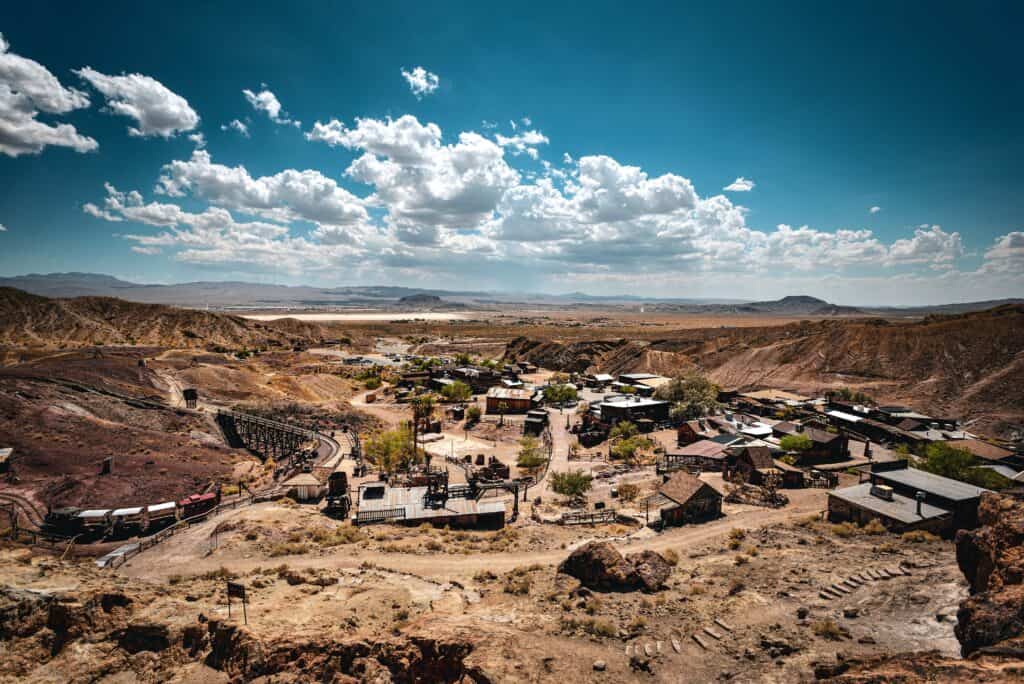
Located in the Mojave Desert, Calico was founded in 1881 during the silver rush and quickly grew into a bustling mining town with over 500 mines. At its peak, the town boasted a population of around 1,200 people and featured numerous businesses, including hotels, saloons, and a newspaper. However, by the mid-1890s, silver prices plummeted, leading to the closure of mines and the exodus of residents. In the 1950s, Walter Knott, founder of Knott’s Berry Farm, purchased and restored Calico, transforming it into a tourist attraction. Today, it is a San Bernardino County Regional Park, offering visitors a glimpse into its mining past through preserved buildings, mine tours, and reenactments. Its unique history and restoration efforts have earned it the designation of California’s official state silver rush ghost town. Its annual events, such as the Calico Days festival, celebrate its rich heritage and attract history enthusiasts from around the region. Visitors can also explore the Calico & Odessa Railroad, a reconstructed mining train ride.
Rhyolite, Nevada
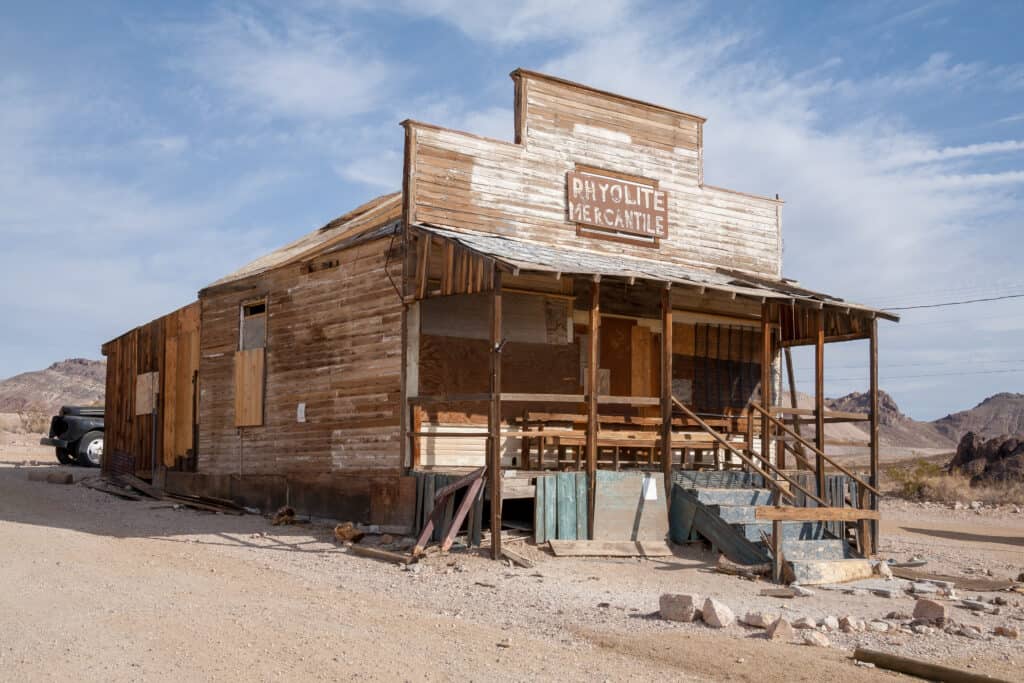
Situated near Death Valley, Rhyolite was established in 1904 following a gold discovery in the surrounding hills. The town’s rapid rise was fueled by a mining boom, and within two years, it boasted a population of over 5,000, along with several banks, hotels, and a stock exchange. Its architecture was particularly notable for its stone and concrete buildings, including the three-story Cook Bank Building and the Bottle House made entirely from glass bottles. However, as with many boomtowns, its success was short-lived; by 1910, the mines were no longer profitable, and residents began to leave. The 1920s saw it completely abandoned, leaving behind haunting ruins that stand to this day. The site is now a popular destination for photographers and history buffs who come to marvel at its eerie remnants. The nearby Goldwell Open Air Museum, featuring outdoor sculptures, adds a modern artistic dimension to the area.
Virginia City, Montana
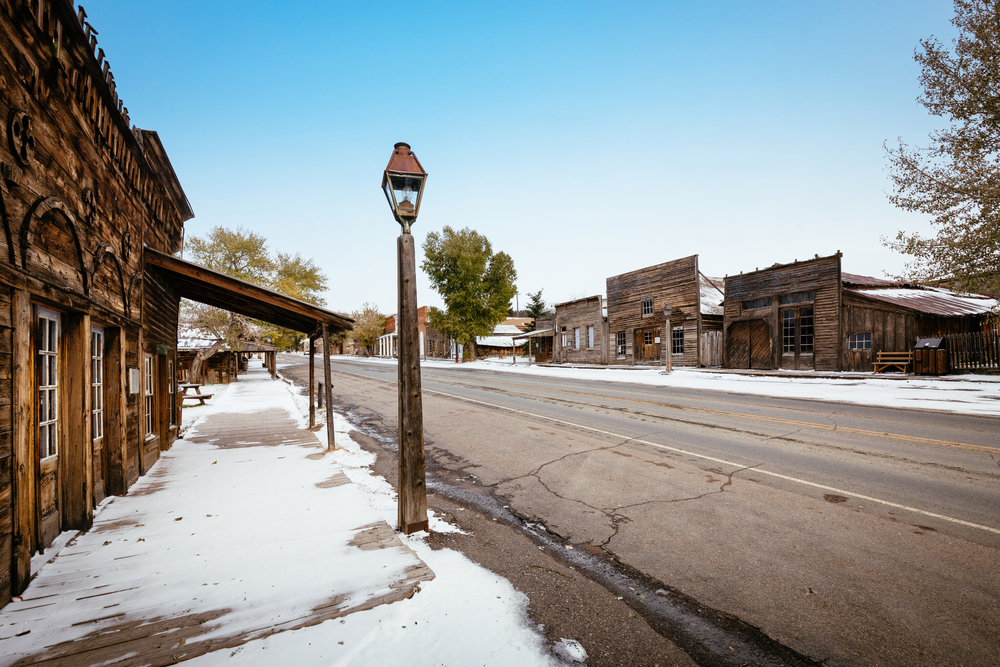
Established in 1863 after the discovery of gold in Alder Gulch, Virginia City rapidly became a bustling mining town and served as the territorial capital of Montana from 1865 to 1875. At its peak, its population swelled to over 10,000 residents, drawn by the promise of wealth from the rich placer gold deposits. Its main street was lined with saloons, theaters, and businesses catering to miners and their families. However, as the easily accessible gold dwindled, the population declined, and by the late 19th century, it had become a near ghost town. Remarkably, many of the original buildings have been preserved, and today, it operates as a living history museum, offering visitors a glimpse into the Gold Rush era. It hosts reenactments, stagecoach rides, and historic tours, immersing guests in its storied past. Its preservation efforts have earned it a designation as a National Historic Landmark, ensuring its history remains accessible for future generations.
Bannack, Montana
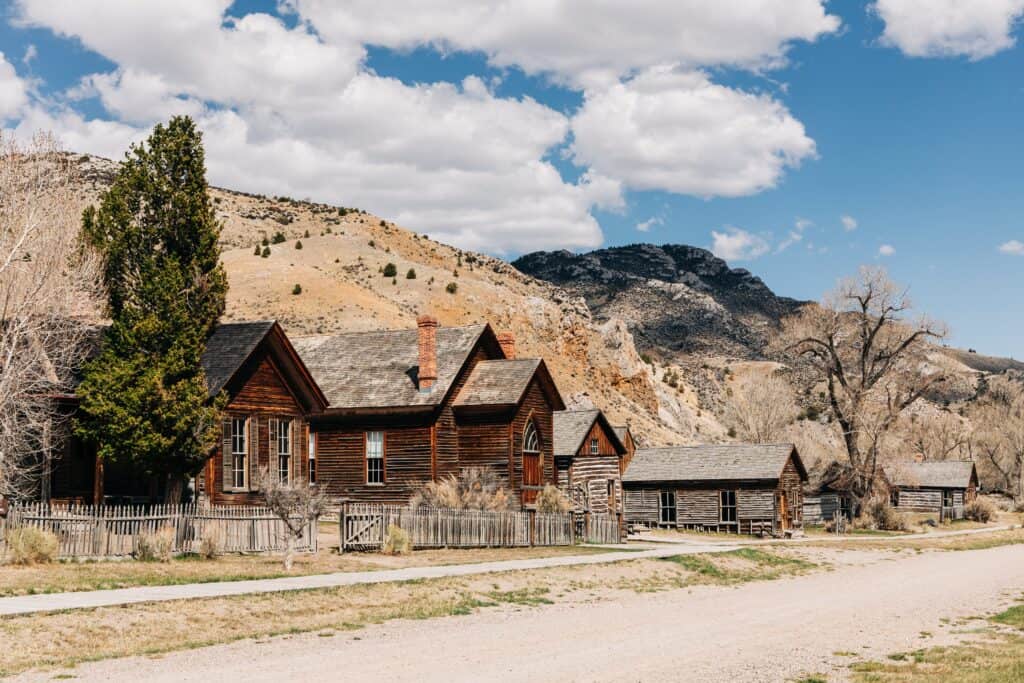
Founded in 1862 following the discovery of gold along Grasshopper Creek, Bannack holds the distinction of being Montana’s first territorial capital. The town quickly grew, with a population that reached around 3,000 at its height, featuring hotels, saloons, and a bustling main street. Its most infamous resident was Sheriff Henry Plummer, who was later revealed to be the leader of a notorious gang of road agents known as the “Innocents.” After the gold rush waned, its population declined, and by the 1950s, it was largely abandoned. Today, Bannack State Park preserves over 60 structures, allowing visitors to explore the well-preserved remnants of this once-thriving town. The park hosts annual events like Bannack Days, celebrating the town’s rich history with music, crafts, and reenactments. Bannack’s preservation offers a unique opportunity to step back in time and experience Montana’s early mining history firsthand.
Jerome, Arizona
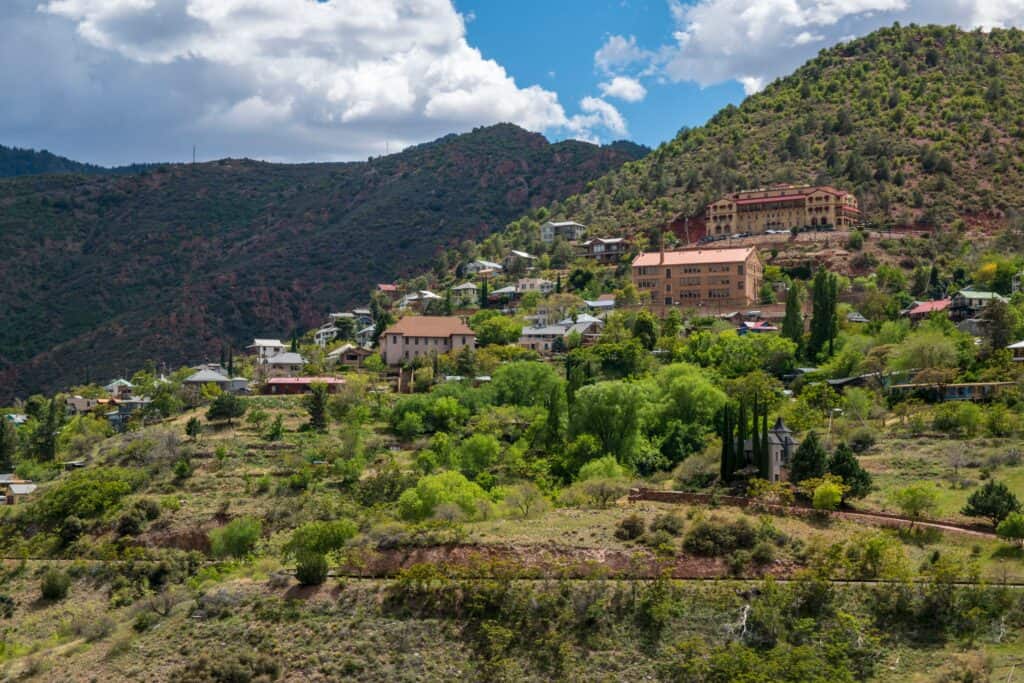
Perched on Cleopatra Hill, Jerome was founded in 1876 as a copper mining camp and quickly grew into one of Arizona’s largest towns. At its peak in the 1920s, it boasted a population of over 10,000, with a vibrant community that included saloons, theaters, and a red-light district. It was known for its rowdy reputation, earning the nickname “Wickedest Town in the West.” However, as copper prices fell during the Great Depression, the mines closed, and by the 1950s, it was nearly deserted. In the 1960s, artists and craftspeople began to repopulate the town, transforming it into a thriving art community. Today, it is a popular tourist destination, featuring art galleries, museums, and historic buildings that tell the story of its mining past. Its unique blend of history and art has earned it a place on the National Register of Historic Places.
Kennecott, Alaska
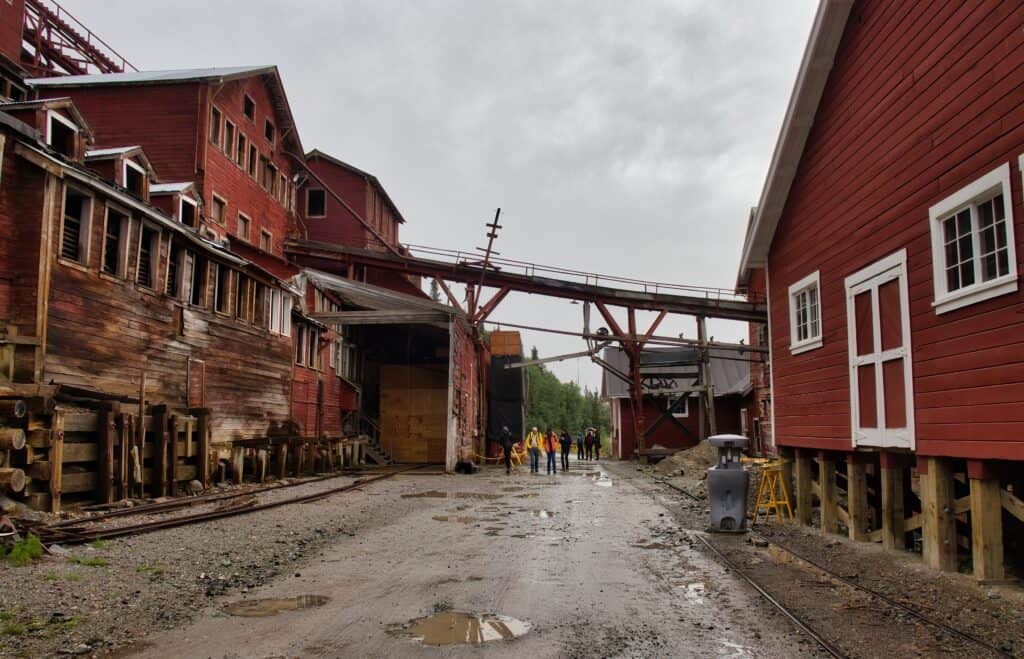
Located in the heart of Wrangell-St. Elias National Park, Kennecott was established in the early 1900s after the discovery of rich copper deposits. The Kennecott Mines Company built a mill town to process the ore, and the area quickly grew, with a hospital, school, and recreation hall serving the community. The mines operated until 1938, producing over $200 million worth of copper, but when the ore was depleted, the town was abandoned almost overnight. Today, it is a well-preserved ghost town, with many of its original buildings still standing, offering visitors a glimpse into early 20th-century mining life. The National Park Service offers guided tours of the mill and surrounding structures, providing insights into the town’s history and operations. Its remote location and stunning natural surroundings make it a unique destination for history enthusiasts and adventurers alike.
Thurmond, West Virginia

Nestled along the New River, Thurmond was founded in the late 19th century as a railroad town serving the surrounding coal mines. At its peak in the early 1900s, it was a bustling community, with hotels, banks, and a busy depot that saw more freight pass through than Cincinnati or Richmond. The town’s decline began with the rise of diesel locomotives, which required less maintenance than steam engines, leading to a decrease in railroad jobs. Additionally, the decline of the coal industry contributed to its dwindling population. Today, it is part of the New River Gorge National Park and Preserve, with the National Park Service maintaining several historic buildings, including the train depot, which serves as a visitor center. Its well-preserved structures offer a window into early 20th-century life in a railroad community. Its inclusion in the national park highlights its historical significance and ensures its preservation for future generations.
Centralia, Pennsylvania
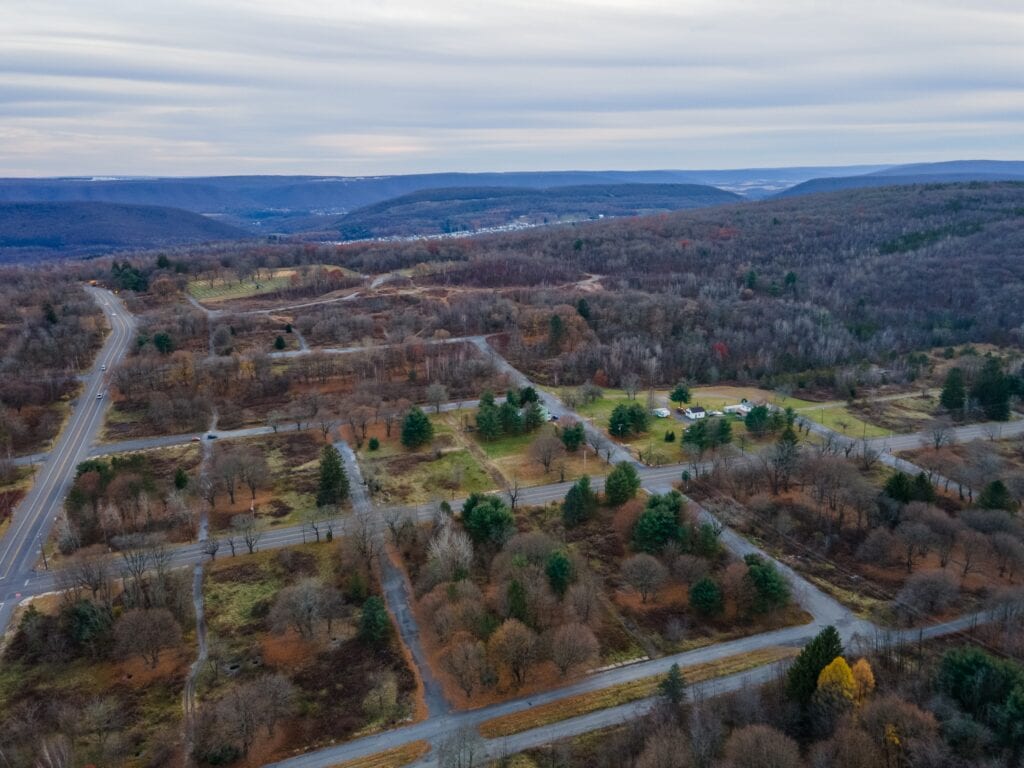
Once a bustling coal mining town, Centralia was founded in the mid-19th century and grew to a population of over 2,000 residents. In 1962, a coal seam fire ignited beneath the town, and despite numerous attempts to extinguish it, the fire continued to burn, causing dangerous levels of carbon monoxide and ground subsidence. By the 1980s, most residents had relocated, and in 1992, the state claimed eminent domain over the remaining properties, condemning all buildings. Today, only a few structures remain, and smoke can still be seen rising from the ground, a haunting reminder of the underground fire that led to the town’s demise. It has become a point of interest for visitors intrigued by its eerie landscape and the story of the fire that still burns beneath it. Its abandoned streets and graffiti-covered highway, known as “Graffiti Highway,” have become a canvas for urban artists and a symbol of nature reclaiming the land.
Glenrio, Texas/New Mexico
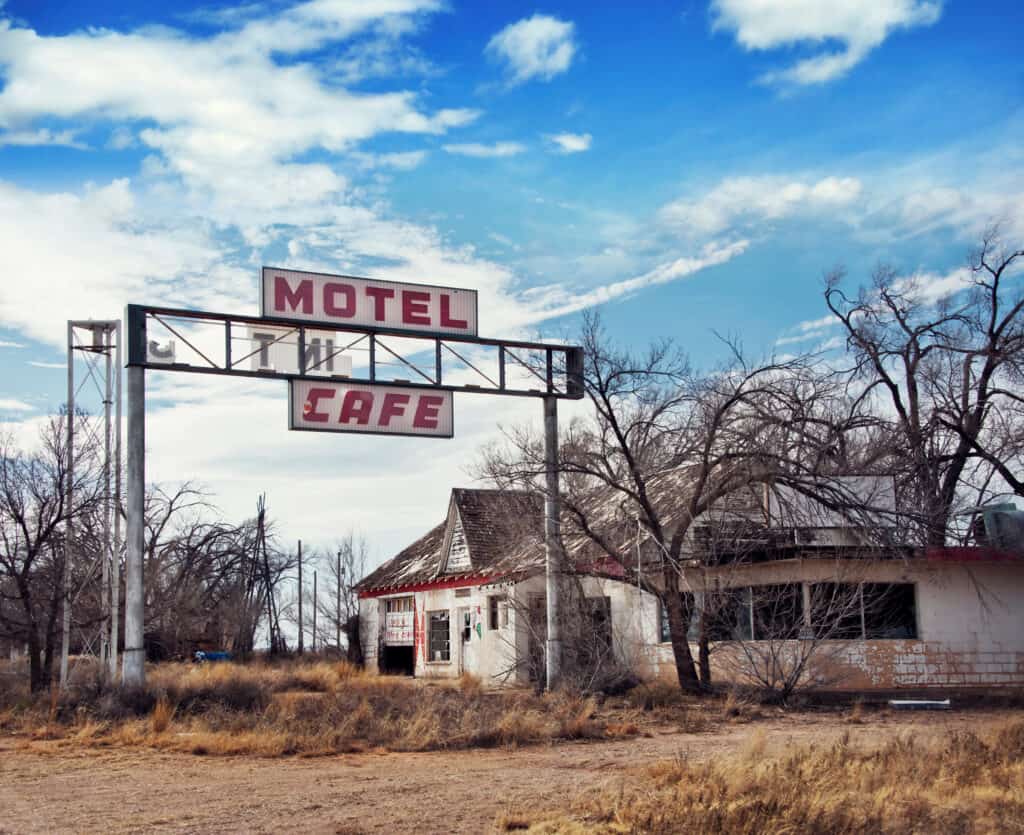
Straddling the Texas-New Mexico border, Glenrio was established in 1903 as a railroad town and later became a popular stop along Route 66. It featured a hotel, diner, and service stations, serving travelers journeying along the “Mother Road.” However, when Interstate 40 bypassed Glenrio in the 1970s, its economy collapsed almost overnight, and residents gradually left. Today, the remnants of Glenrio, including its abandoned motels and gas stations, serve as a poignant reminder of Route 66’s heyday. It is now an eerie yet picturesque stop for road trippers exploring the historic highway. Visitors are drawn to its stark beauty and the chance to step back into a time when it was a vital hub for weary travelers. Preservation efforts are ongoing, with historians working to keep its story alive for future generations.
St. Elmo, Colorado
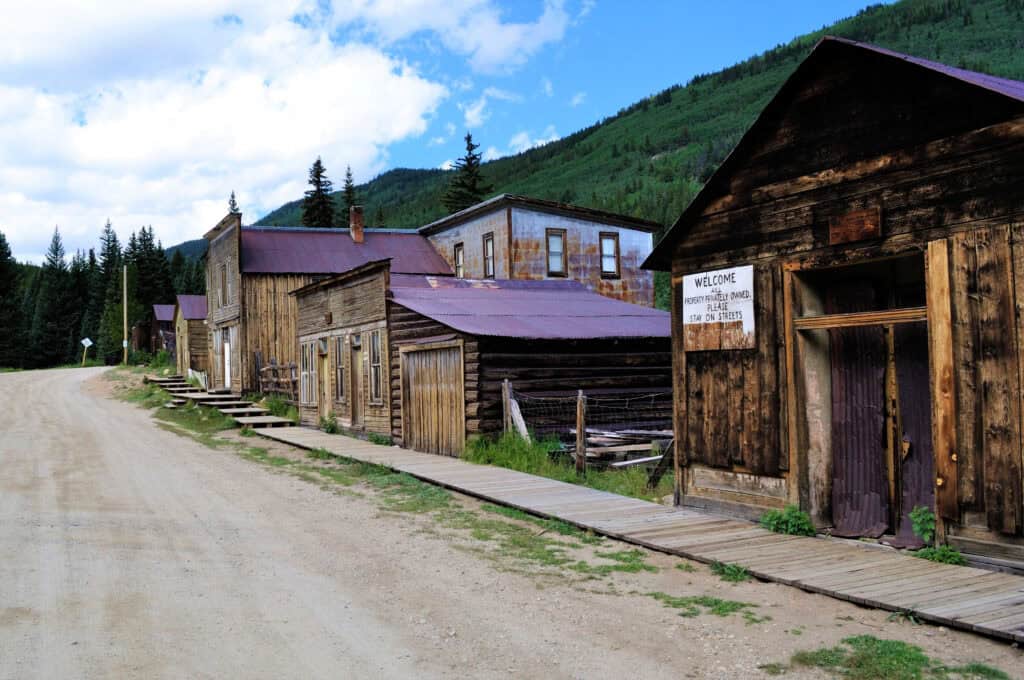
Nestled high in the Rocky Mountains, St. Elmo was founded in 1880 during Colorado’s silver and gold rush. At its peak, the town had a population of over 2,000 and was home to a telegraph office, five hotels, several saloons, and a schoolhouse. The Denver, South Park & Pacific Railroad brought supplies and transported ore, making it a thriving mining hub. However, when the mines began to fail in the early 20th century, the population dwindled rapidly, leaving the town nearly deserted by the 1950s. Today, it is one of Colorado’s best-preserved ghost towns, with many original structures still intact. Visitors can explore the general store, old cabins, and the historic town hall, all set against the stunning backdrop of the mountains. It is also known for its abundant wildlife, including chipmunks that eagerly greet tourists.
Garnet, Montana
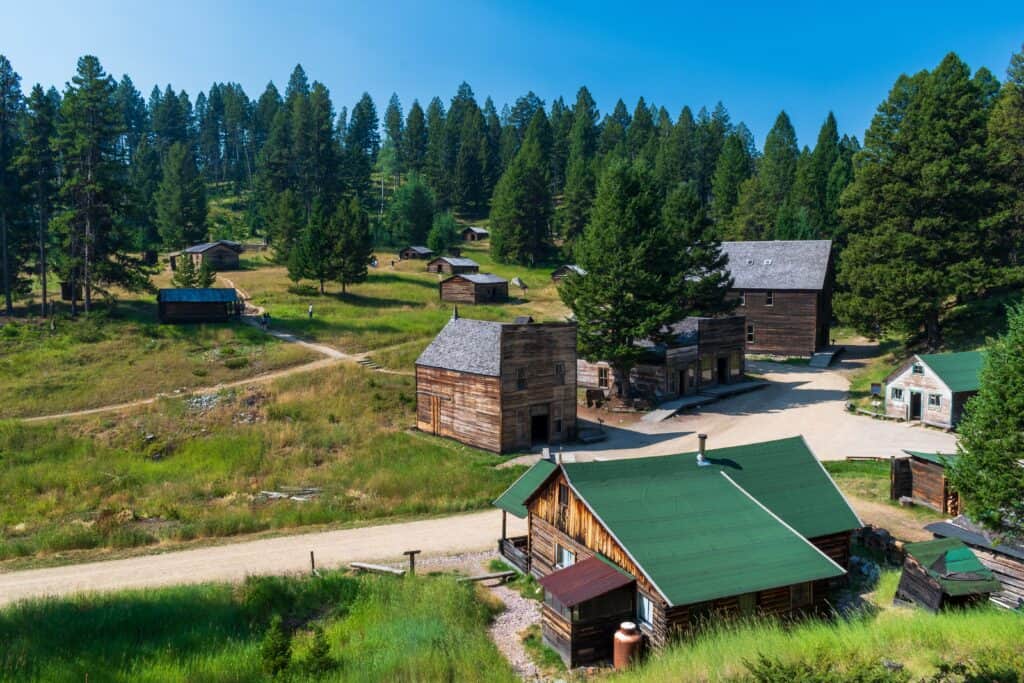
Located in western Montana, Garnet was founded in the 1890s during a gold and silver mining boom. The town prospered briefly, with a population of about 1,000 and numerous businesses, including saloons, a hotel, and a school. By the 1920s, as the mines were depleted and a fire destroyed much of the business district, the town began to decline. By the 1940s, it was largely abandoned, leaving behind a well-preserved ghost town. Today, it is managed by the Bureau of Land Management and offers visitors a glimpse into life during the mining era. Its remote location and untouched structures make it a favorite destination for history buffs and ghost town enthusiasts. During the winter, visitors can reach it only by snowmobile or cross-country skiing, adding to its allure as a hidden treasure.
This article originally appeared on Rarest.org.
More from Rarest.org
13 Unusual Architectural Wonders Hidden Around the World

All around the world, hidden architectural wonders blend creativity, history, and ingenuity in ways that often go unnoticed by most travelers. These unusual structures can be found in remote locations, unexpected cities, or tucked away in natural landscapes. Read More.
15 Lesser-Known Species on the Brink of Extinction

Many species around the world are facing the threat of extinction, but not all of them are well-known. While efforts to save popular animals like pandas and tigers often make headlines, lesser-known species are quietly disappearing at an alarming rate. Read More.
22 Striking Reptiles with Unusual Color Patterns

Reptiles are known for their impressive variety, and some species boast truly striking color patterns. Their coloration not only serves a purpose in camouflage or mating but also highlights the incredible diversity of the reptile world. Read More.
